Today is my first morning in Australia. I had a wonderful evening the day before, my day of arrival, at the hands of my host Dr. Mark Staniforth, Associate Professor at Flinders University and the director of the maritime archaeology program. For my first two nights here I’m staying at the home of Mark and his wife Paddy at Willunga, south of Adelaide (where Flinders is located) and north of Victor Harbor (where the field school will take place).
Today we will all be traveling down to Victor Harbor, and I’ll be meeting the students and staff who I will be working with for the next two weeks. Mark promises to take me on a very scenic route. The best part about the trip is that we are in a convertible—and February in Australia is at the height of summer!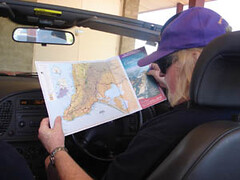
As we prepare to leave, Mark shows me the lay of the land on a map of South Australia and the Fleurieu Peninsula.
It’s a wonderful drive through Australia’s wine country. While the landscape is ruggedly beautiful, it is very dry here compared to Florida. In fact, South Australia is the driest state in the driest continent. Today it is brutally hot—41.2 degrees C, which is around 106 degrees F! But its not too bad with the convertible top down.
On the way we stop at Port Willunga, and take a look at the beach. Very close to this beach, in 1888, the iron-hulled sailing ship Star of Greece wrecked during a fierce storm. This is one of the sites that we will be diving on during the field school.
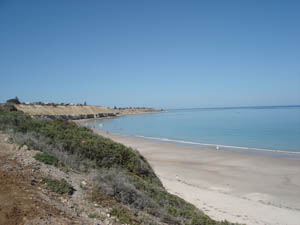
Then we continue the drive to Victor Harbor, enjoying the scenery as we travel down the Fleurieu Peninsula.
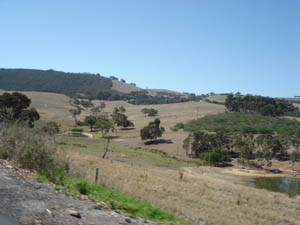
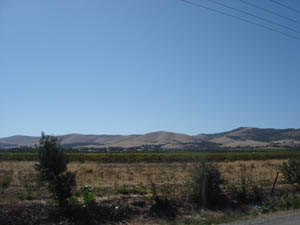
Within an hour we’ve reached the rocky beaches of Victor Harbor.
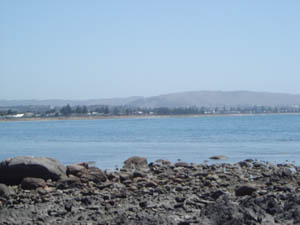
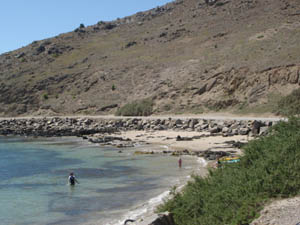
Soon we run into a group of field school students, conducting a training dive conducted by Jason Raupp, Flinders University Technical Officer and diving instructor. Jason is an old friend of mine who has worked with me on a number of shipwreck excavations in Florida and Mississippi. He is on the right in the picture below.

The students are conducting a simple checkout dive, a good way for Jason to assess their diving skills and for them to practice before performing an actual working dive. Each student undergoes an out-of-air drill, making a simulated emergency ascent to the surface, and then tows their buddy back to the shoreline. Safety is always the number one priority on any scientific diving project.
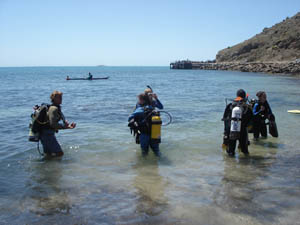
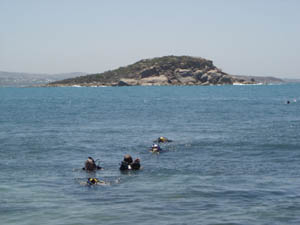
After assisting the divers, Mark, Paddy, and I drive into the nearby town of Port Elliot for some lunch. It is a great little town, with a lot of character.
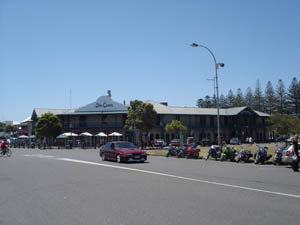
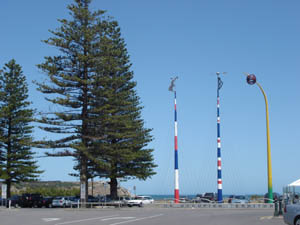
Memories of the region’s rich maritime heritage are kept alive by institutions such as the South Australian Whale Centre, which is dedicated to the history of whaling and the whales themselves which continue to visit these waters.
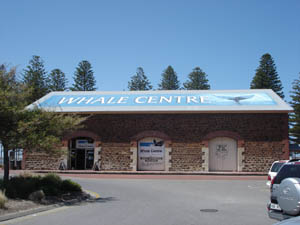
After lunch, we visit the camping park where the staff and students will live for the duration of the field school. I check out my assigned room, and then take a quick tour of the facilities we will be using. Jason has set up a compressor to fill scuba tanks in one corner of the park.
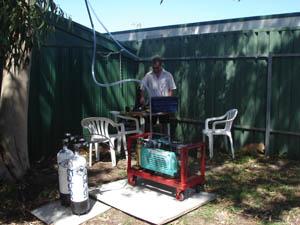
Next to this fill station is a shed, which the camper park has generously loaned to us for gear storage. Like all maritime archaeology projects, this one is equipment-intensive and requires a lot of stuff.

After dropping off some of my own gear, Mark, Paddy and I drive back to Willunga. For the next two days, I will be diving on the wreck of the Star of Greece which is not to far away from their house, so I’ll be staying with them a bit longer before moving in to the base camp with the students. I’ll post again soon, with some underwater pictures of our dive on the Star of Greece.

